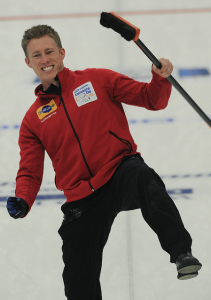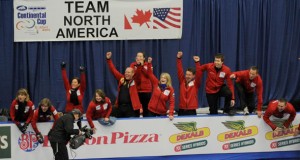Around the House: Why the WFG Continental Cup is the best club bonspiel ever
We’re lucky in this country to have so much top-level curling to watch during the season. The Brier and Scotties are fantastic entertainment for us recreational curlers who toil in happy obscurity at our local clubs. The Worlds are always exciting, and it’s hard to think of anything that can top last year’s Olympic curling competition. But those are all elite competitions that feature the best curling athletes from home and away in a setting that’s heavy on pressure and drama, and light on – well – lightness.
But I suspect that after last week’s WFG Continental Cup in St. Albert, Alberta, many recreational curlers have discovered an event they can follow that combines the glitz and glamour of international competition with the feel of something much more familiar. Yes, I think the Continental Cup is the best club bonspiel known to Planet Curling, and here’s why:
First, there’s a strong sense of territorial domination. Those of us who have belonged to a small curling club in a small community know what I mean. A few kilometers down the road there’s another small club in another small town. And a bit to the east there’s another one. To the west, another. Each has its star players, its history and its heritage. Bring them together at a weekend bonspiel, and the representatives of each club might as well be defending their right to claim world curling domination. It’s fierce out there!
Well, the Continental Cup is no different, even if the “clubs” battling it out on the ice consist of teammates thrown together because they (a) wear the Red Maple Leaf/Stars & Stripes or (b) don’t wear the Red Maple Leaf/Stars & Stripes. Us against them, brothers and sisters in arms. It wasn’t hard to see just how much the various combinations of players enjoyed the chance to work together, instead of against, each other in their effort to win enough points to defeat the other side. It might have been announced as “Team North America” against “Team World”, but it was no different from Maxville versus Alexandria (to use an Ottawa Valley reference), or my club against yours.
Second, this competition resonated with the kind of socializing and fun that recreational curlers expect when they head off for a weekend bonspiel. There has to be competition, sure, but there also has to be an element of downright craziness.
I’m thinking back to some wild Ladies’ and Mixed bonspiels I’ve participated in, each with a theme such as St. Patrick’s Day, or Wild West, or Funny Hats. Costumes, trivia quizzes, skits – you get the picture. At bonspiels like these, curling is only part of the package. The food, the fun, the prizes, and the antics on and off the ice all play a role too.
Something tells me that this same weekend-bonspiel spirit took hold among the curlers at The Continental Cup. Players banged the boards in support of their teammates: that’s not something you see at every elite curling competition. And have you ever seen so much laughter out on the ice at an elite event? And it wasn’t just because Team North America was winning either. Even the losing World Team demonstrated they had no reservations about kicking the humour quotient up a notch. Coaches exchanging team jackets? The Norwegians marching into the final Skins competition, dressed magnificently (and against the dress code rules) in sparkling pink? Bonspiel mentality at its very best.
Yes, there was some terrific (and, let’s face it, some less-than-terrific) curling. And happily for us, Team North America won. But to me, the Continental Cup didn’t look like an international competition.
It looked like a really big bonspiel with a lot of familiar curling faces having a whole lot of fun.






